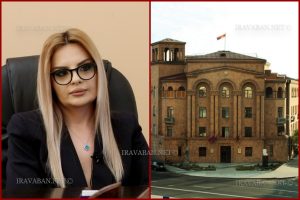Genocide museum-institute’s website published a number of documents which evidence of the Genocide. Below are the testimonies of the German officials about the Genocide.
German Ambassador to the Ottoman Empire Wangenheim reports to Reichschancellor Bethmann-Helvegen
17 June, 1915.
“… It became clear that the displacement of Armenians issues not only from military reasons. Interior Minister Talaat Bey recently honestly announced that to Dr. Mortsman, who is now serving in the Imperial Embassy. Talat said that “the Sublime Porte intends to take advantage of World War II in order to completely clean the earth of the enemies, local Christians so that the diplomatic missions of other countries do not prevent from doing so This event will serve to the interests of Turkey’s allies and especially the Germans, and thus they are able to consolidate.”
Wolfgang and Sigrid Gust (ed.) in cooperation with Taner Akcam: The Armenian Genocide during the First World War. Documents from German State Archives. A-19743. DE/PA-AA/ R14086. DuA Dok. 081 (gk). 1915-06-07-DE-003.
German Ambassador to the Ottoman Empire Wangenheim reports to Reichschancellor Bethmann-Helvegen
7 July, 1915.
… 14 days before the displacement and resettlement of the Armenians was limited to a battlefield near regions, since then the Sublime Porte decided to extend these measures also on Trabzon, Mamuret-ul-Aziz and Svaz, began to implement these measures, although these regions are not threatened by enemy invasion yet. The current situation and how this move is implemented, shows that the government is pursuing the complete destruction of the nation in the territory of Turkish Empire.
Wolfgang and Sigrid Gust (ed.) in cooperation with Taner Akcam: The Armenian Genocide during the First World War. Documents from German State Archives. A-21257. DE/PA-AA/ R14086. DuA Dok. 106 (gk). 1915-07-07-DE-001.
Report on measures taken against the Armenians by the Turkish Government.
Ryoslere to Reichschancellor Bethmann-Helvegen from Aleppo
17 July, 1915.
…On 14 June, the column of Armenians, which arrived to Aleppo, after a four weeks march under the scorching sun, slowly came here and brought 12 corpses with them.
2. In Diarbakir provinec a Kaymakam recieved verbal instructions about how to deal with the Armenians. He refused to perform unless they they are repeated in writing. After that he was dismissed and killed on the way to Diyarbakir. I had received this information from the local Christians and that’s why I just had put aside. Now that information was confirmed by a trustworthy Muslim source. Many officials, are probably killed because they were not treating the Armenians in their regions with sufficient cruelty.
… However, there are rumors that leaflets are scattered among the population in Diyarbakir province in northern Mesopotamia perpetrating irritation against them the Diyarbakir province in northern Mesopotamia and the population scattered leaflets, which were perpetrated against the Armenians. It seems that there are attempts to introduce this fact of distributing the leaflets as undertaking by Germany. This is due to the fact that the leaflets were usually distributed by the Germans.
R 14086, Ab. 23232.
The German Consul in Aleppo Ryoslere’s report to Reichschancellor Bethmann-Helvegen
27 July 1915.
As it is considered the Government organized the killings of those whom they sent into exile. The Government released Turkish prisoners from prison, dressed in military uniforms and sent to areas where the deported should pass. He formed volunteers groups of Circassians and sent them against Armenians. … The Government really intends to drive those displaced into that chaos.
Wolfgang and Sigrid Gust (ed.) in cooperation with Taner Akcam: The Armenian Genocide during the First World War. Documents from German State Archives. A53a/1915/4563 A-2391. DE/PA-AA/R14087. DuA Dok. 120(gk). 1915-07-27-DE-001.















